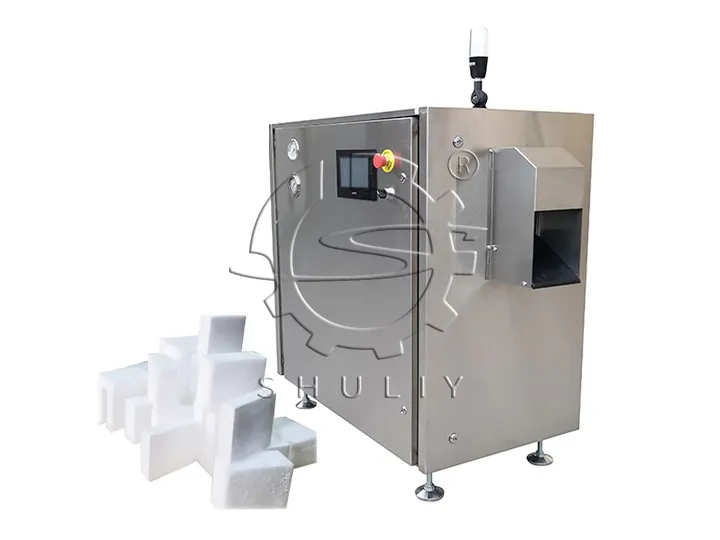How Does a Dry Ice Machine Work? The Transformation from Liquid CO₂ to Solid Block
Dry ice blocks are a cornerstone of modern cold chain logistics, food preservation, and industrial cleaning. But have you ever wondered how these ultra-cold, solid blocks are created from what starts as a liquid? The answer lies within a sophisticated piece of equipment: the dry ice block press.
Understanding how does a dry ice machine work is key to appreciating its efficiency and value. The process is a fascinating application of physics and precision engineering, transforming liquid carbon dioxide (LCO₂) into a dense, solid block in a matter of seconds.
The Core Components of a Hydraulic Dry Ice Press
Before diving into the process, it’s helpful to know the key players inside the machine. A modern, automated dry ice press consists of several critical systems working in harmony.
- CO₂ Inlet System: This is where the raw material, liquid CO₂, is fed into the machine from an external storage tank or cylinder.
- Compression Chamber: Often called the “snow horn” or press box, this is the heavily reinforced chamber where the transformation from liquid to solid occurs.
- Hydraulic System: This is the muscle of the operation. A powerful hydraulic pump, running on No. 46 hydraulic oil, drives a piston that exerts immense pressure on the newly formed dry ice snow.
- Control System: The brain of the machine. In high-end models, this is managed by a Siemens PLC and touchscreen. This system, supported by reliable Schneider contactors and Omron relays, precisely controls every step of the automated cycle.
Advanced Dry Ice Block Machine for Dry Ice Production
The Step-by-Step Dry Ice Production Process
The creation of a dry ice block is a precise, multi-stage process. Here is a breakdown of each step.
Step 1: Liquid CO₂ Injection
The process begins when the machine’s control system opens a valve, allowing pressurized liquid carbon dioxide to flow from the storage source into the compression chamber.
Step 2: Rapid Expansion (The Joule-Thomson Effect)
This is the most critical stage. As the high-pressure liquid CO₂ enters the low-pressure environment of the compression chamber, it undergoes rapid expansion. This phenomenon, known as the Joule-Thomson effect, causes an instantaneous and extreme drop in temperature. The liquid CO₂ instantly boils and solidifies, converting approximately 50% of the liquid into solid CO₂ “snow” and the other 50% into cold CO₂ gas, which is vented away.
Step 3: Hydraulic Compression
Once the chamber is filled with a predetermined amount of fluffy CO₂ snow, the injection valve closes. Immediately, the powerful hydraulic system activates, driving a large piston into the chamber. This ram compresses the low-density snow with immense force, squeezing out any remaining CO₂ gas and fusing the solid particles into a single, dense, and hard dry ice block. This is what makes a hydraulic dry ice press so effective at creating high-quality blocks.
Step 4: Ejection of the Finished Block
After compression, the hydraulic ram retracts, and an ejection plate pushes the finished, solid dry ice block out of the chamber and onto a conveyor or collection area. The entire cycle, from injection to ejection, is fully automated and can repeat in less than a minute.
How Is the Process and Block Size Controlled?
So, how does a dry ice machine work with such precision? The consistency in block weight and size is not accidental. It is managed by the Siemens PLC. Through the touchscreen interface, an operator can precisely set the “ice spraying time”—the duration the CO₂ injection valve stays open. A longer time allows more CO₂ snow to form, resulting in a heavier block. This simple adjustment provides full control over production output to meet specific customer requirements.
Understanding this controlled process of expansion and compression is the first step in seeing how producing dry ice in-house can dramatically lower costs and improve quality control. If you are exploring ways to optimize your supply chain, learning more about a modern industrial dry ice block machine is the logical next step.

